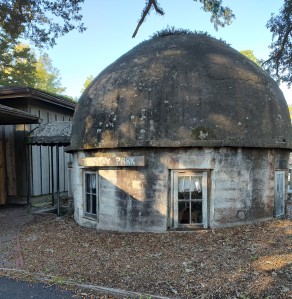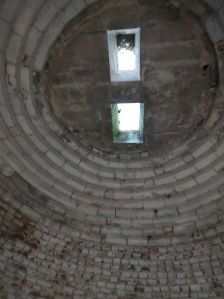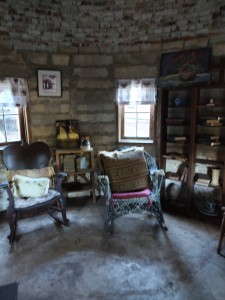 I have long suspected that readers often find the right book at just the right time. I was aware of The Poet of Tolstoy Park (Ballantine Books, 2005) by Sonny Brewer from the time of its publication and just never got around to reading it. I finally read it recently and found it the perfect read at this stage of life. I might not have appreciated it quite as much back in 2005.
I have long suspected that readers often find the right book at just the right time. I was aware of The Poet of Tolstoy Park (Ballantine Books, 2005) by Sonny Brewer from the time of its publication and just never got around to reading it. I finally read it recently and found it the perfect read at this stage of life. I might not have appreciated it quite as much back in 2005.
The Poet of Tolstoy Park is a contemplative and philosophical novel. In the mid-1920s, a man named Henry Stuart, living in Idaho, learns that he has a short time to live. His doctor tells him that he suffers from an advanced state of non-contagious tuberculosis, suggesting that his final days might be easier if he moves to a more hospitable climate. After considering a move to California, Stuart hears about the utopian single-tax colony of Fairhope, Alabama, divests himself of most of his possessions – including his shoes, and moves sight unseen to ten acres in Montrose, a small community just up the road from Fairhope. His two sons and best friend, left behind in Idaho, think he’s crazy.
Stuart, dying, in his mid-sixties, and alone, embarks on a stoic existence and finds the Fairhope community to be kind and willing to assist. His ten acres have no house, only a barn in disrepair, and Stuart and his new-found Fairhope friend, Peter Stedman, create a suitable room in a corner of the barn. Stuart, inspired by the abodes of Native Americans and the nests of birds, plans to build a small round hut – a masonry dome, really – as his final home. The novel painstakingly describes Stuart’s method of building his house – he insists on doing it alone – as he pours concrete blocks and scavenges bricks from a ruin on the bay.
Brewer’s narrative excels in the quiet moments and the details of a life in nature. His descriptions of Henry Stuart’s methodical thought and process in the construction of his hurricane-proof abode make for reflection and calm, as do the minute details of Stuart’s life. The narrative is deliberate, but I found myself eager to keep reading – to see what would come next. The very decent people that Stuart meets and befriends along the way are finely and distinctly drawn; I hope they are based on real people, each one.
A former seminarian who eschews organized churchgoing, Stuart follows the philosophy of Henry George, who was an influence on many in the early twentieth century, including the founders of Fairhope and the great Russian author Leo Tolstoy. Stuart is an acolyte of the writings of Tolstoy, especially his nonfiction essays, and names his Montrose home “Tolstoy Park” in his honor.
Henry Stuart’s aim is to keep his terminal illness a secret from the Fairhope community, but secrets are hard to keep in a small tight-knit town – especially if the subject is a disheveled, unshaven, barefoot newcomer in his sixties. When Stuart admits to his friend Peter that “I am supposed to die,” Peter’s response is “Well, hell, I reckon so! Me, too.” Henry Stuart has chosen his place and way of dying and living and local gossip makes him withdraw into increased solitude to complete his tasks with minimal intrusion.
Suffice it to say, Mr. Stuart does not die on the doctor’s schedule.
As we used to say in third grade book reports, “If you want to know more, you’ll have to read the book.” I hope you will; it’s a very good one, with valuable lessons for living.
__________________________________________________
Henry Stuart was a real person and the basics of Sonny Brewer’s fictional narrative are essentially true. During his time in Fairhope, the retired professor became a fixture in the area, occasionally giving talks to the community – barefoot and sharing his far-reaching interests and philosophies. He welcomed visitors to his “hermit house” over the years; his guest book had well over a thousand signatures. The great civil liberties attorney Clarence Darrow, a regular visitor to Fairhope, reportedly signed the book half a dozen times.
Present-day visitors are still able to sign a guest book in the house that Henry built. The house is still there. It is listed on the National Register of Historic Places now, and is surrounded by a parking lot in a nondescript office complex off a busy highway. The rest of Stuart’s ten acres have been developed, but the hut at Tolstoy Park is always open to visitors. Author Sonny Brewer leased the space from the current owner of the property and did repairs. He stayed there while he was writing part of the novel. 
It is a strangely efficient round house, fourteen feet in diameter, with an ancient tree standing beside it still, and with no corners to gather clutter. The house is built slightly into the ground and there are a door and six windows. Two skylights are at the top of the dome. The furnishings are simple, with places for writing, reading, and contemplation. There’s a wood stove. To save space, Henry Stuart hung his bed off the ground and used a ladder to crawl up and in. Today, there are mementoes of the original owner scattered about. 
It is still a quiet, calm, and spiritual place, despite the encroachment of the growing community around it. When you visit, stand in the middle of the room and hum, or sing, or just say Hallelujah, to take advantage of the sublime acoustics. Take a moment to honor Henry Stuart, and to thank Sonny Brewer for bringing him and his story to a larger audience. 
